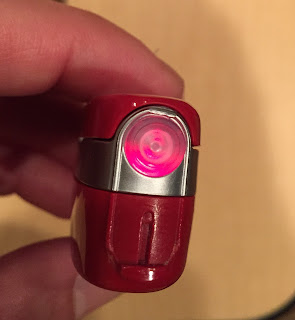By Eric Sherman
When your cochlear implant equipment
is out of manufacturer’s warranty period and you need a new sound cable,
headpiece (coil) or processor, often people will go through their health
insurance to help cover part of the cost.
Not all health insurance is the same, so be aware as your insurance
company might reimburse you for less than you expect. This was the case with us
when we purchased a CI sound cable for $125.00 and the insurance reimbursed us $5.81,
less than 10% of the cost.
 |
| Cochlear Implant Sound Cord |
After receiving our reimbursement
check and Explanation of Benefits (EOB), we noticed the “Allowable Amount” (the
amount the insurance company will pay for service or medical equipment) was
substantially less than the cost of the equipment ($125.00 compared to their
allowable amount of $11.62).
When inquiring about the
allowable amount and how it was derived, the insurance company’s own
definitions, terminologies and explanation were as confusing, ambiguous and
misleading as credit card offers you receive in the mail. Under “medical supplies, equipment and
footwear benefits” in our plan it stated our responsibility is “all charges in
excess of 50% of the Negotiated Fee Rates,” for non-participating
providers. The negotiated fee rate is
the rate negotiated for in-network providers and is synonymous with “allowable
amounts.” Our implant manufacturer is not a
participating provider, but we received an in-network provider waiver, meaning
we would receive the in-network rate (60% coverage based on our plan).
Here is the problem with cochlear
implant equipment; it is proprietary to each manufacturer’s device. Parts cannot be mixed and matched between
manufacturers. Finding a compatible
sound cable at the cost of $11.62 is not possible. In our grievance filed with state regulators,
we argued this point and requested the insurance company explain their
methodology in how they derived at $11.36, in this instance, to determine their
allowable amount.
Based on the definition outlined
in our policy, we reasonably believed that the insurance company would cover
60% of the cost of the sound cord. The
insurance company responded to our inquiry and grievance describing five
different methods of determining allowable amounts and none of it made sense in
relationship to our claim. In some instances, their explanation directly
contradicted what was outlined in our policy. Eventually, the insurance company claimed the
amount was determined by a “customary and reasonable rate of reimbursement and
not at billed charges.”
A "customary and
reasonable" is a term used by insurance companies to cap their exposure on
certain medical equipment and procedures. Paying less than 10% of the billed
amount didn’t seem to be reasonable. The
insurance company refused to divulge the methodology used to determine what was
customary and reasonable and thus settled on the rate of $11.62. Under this terminology, insurance companies decide
the rate they will pay.
In the end,
state regulators didn’t have the legal authority to compel the insurance
company to reveal how they came up with their rates. An adjustment was made to our
claim and the rationale behind the adjustment was equally confusing. We were reimbursed
more on our claim, but the amount was substantially less than what was
billed.
Clearly, the power in the health
care industry lies with the insurance companies and not the consumer. Right now
is open enrollment for health care insurance (it’s the law, you must have
health insurance). If you are looking
for a new health care plan, you may want to contact the insurance provider you’re
considering to find out their coverage on your cochlear implant equipment. (Here are links to billing codes for different
cochlear implant manufacturers Advanced
Bionics, Cochlear,
Med El).
Final thought, be an informed
voter when it comes to your health care.
Avoid the temptation of negative ads and political bias. Unfortunately, in our state, the voters
missed an opportunity to gain more control over their health care. The insurance companies ran a huge negative
ad campaign with no opposition which helped defeat a health care proposition. The bill would have helped make health care
costs more transparent.
More
about Ci Wear
Ci Wear is a patent pending shirt designed for cochlear implant processors and other listening device. Use as an exercise shirt, rash guard or swim shirt during sports activities. The shirts have pockets that add a layer of security to your device. Made in theUSA
Ci Wear is a patent pending shirt designed for cochlear implant processors and other listening device. Use as an exercise shirt, rash guard or swim shirt during sports activities. The shirts have pockets that add a layer of security to your device. Made in the
If you like our stories feel free to Subscribe to our blog
and share with others. Do you have a story you would like to share? If so, send it to us. We just might use your story on our next blog.






